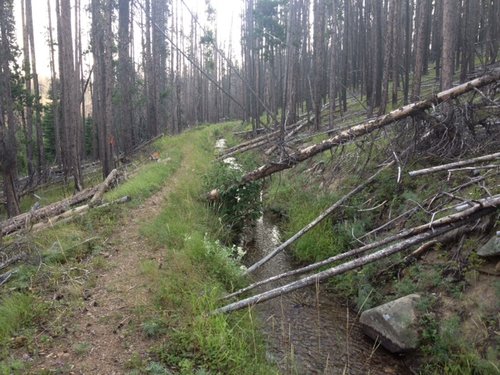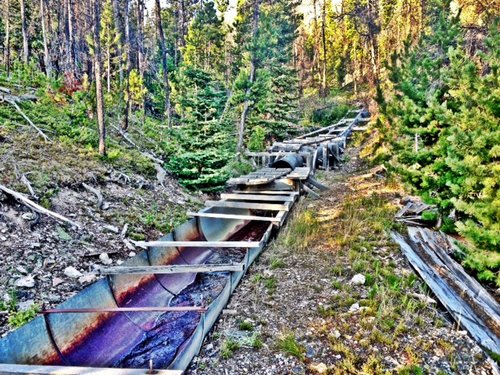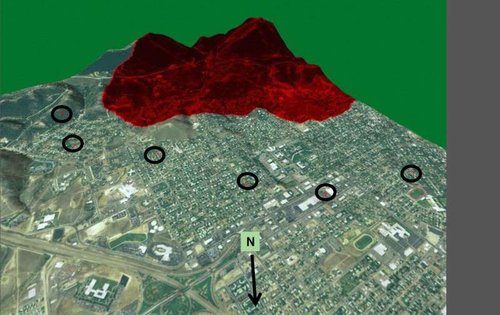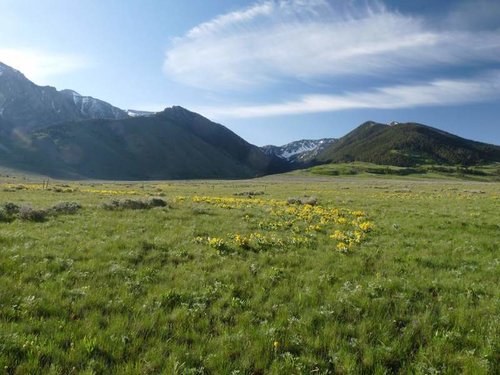Nameless Range
Well-known member
I am a member of the RMEF and I think are arguably the most powerful conservation organization in North America.
That said, I am somewhat frustrated by them lately. When supporting an issue, it is important to bring facts of support to the table, for if you bring false reasons in support, your opponents will nail you to the wall on those reasons alone, ignoring the the greater issue as to whether or not what you are supporting is a net-gain.
Here we have a letter from the RMEF:
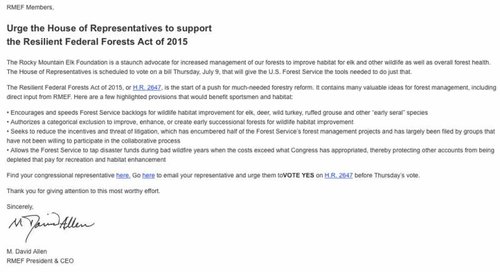
Notice the third bullet point: "which has encumbered half of the Forest Service's forest management projects".
Senator Tester recently said the same thing, and was sufficiently nailed to the wall for it. Did they not see that, or am I missing something?
I think Tester was referring to Montana. Is there evidence that this is true when we look at the Forest Service nationally?
IMO this bill is going to far. We just had a farm bill that created a CE for collaboratively developed restoration projects up to 3,000 acres in size. This bill would increase that to 15,000 acrres. There's quite a bit more.Additionally, the Bonding Requirements for litigants seems as if it will make it so that only the big money will be able to sue the government. I am not a fan of the perpetual litigators, but throwing the baby out with the bathwater is not the answer.
Additionally, this bill makes it much harder to decomission roads (Section 802), which IMO, is one of the best tools we have for improving elk habitat. Proponents of this bill will also say that it fixes the fire funding problem. The fact is it does nothing to deal with the real issue that fire suppression costs are taking a bigger piece of the overall budget pie every year. In fact, it very well could make it worse. To quote Mike Anderson, an attorney for the Wilderness Society, "the bill could exacerbate the Forest Service’s long-term funding problem by adding costs covered by future disaster funding (on top of regular appropriated funds) to the 10-year average amount that must be appropriated in order for the President to declare a major disaster for wildfire. Consequently, Forest Service appropriations for fire suppression would likely continue to spiral upward, consuming an ever-growing proportion of the agency’s budget and leaving less appropriated funding for all other national forest management activities. "
Perhaps the good in this bill outweighs the bad. It's tough for me to see that.
Read the bill here.
https://agriculture.house.gov/bill/hr-2647-resilient-federal-forests-act-2015
That said, I am somewhat frustrated by them lately. When supporting an issue, it is important to bring facts of support to the table, for if you bring false reasons in support, your opponents will nail you to the wall on those reasons alone, ignoring the the greater issue as to whether or not what you are supporting is a net-gain.
Here we have a letter from the RMEF:

Notice the third bullet point: "which has encumbered half of the Forest Service's forest management projects".
Senator Tester recently said the same thing, and was sufficiently nailed to the wall for it. Did they not see that, or am I missing something?
I think Tester was referring to Montana. Is there evidence that this is true when we look at the Forest Service nationally?
IMO this bill is going to far. We just had a farm bill that created a CE for collaboratively developed restoration projects up to 3,000 acres in size. This bill would increase that to 15,000 acrres. There's quite a bit more.Additionally, the Bonding Requirements for litigants seems as if it will make it so that only the big money will be able to sue the government. I am not a fan of the perpetual litigators, but throwing the baby out with the bathwater is not the answer.
Additionally, this bill makes it much harder to decomission roads (Section 802), which IMO, is one of the best tools we have for improving elk habitat. Proponents of this bill will also say that it fixes the fire funding problem. The fact is it does nothing to deal with the real issue that fire suppression costs are taking a bigger piece of the overall budget pie every year. In fact, it very well could make it worse. To quote Mike Anderson, an attorney for the Wilderness Society, "the bill could exacerbate the Forest Service’s long-term funding problem by adding costs covered by future disaster funding (on top of regular appropriated funds) to the 10-year average amount that must be appropriated in order for the President to declare a major disaster for wildfire. Consequently, Forest Service appropriations for fire suppression would likely continue to spiral upward, consuming an ever-growing proportion of the agency’s budget and leaving less appropriated funding for all other national forest management activities. "
Perhaps the good in this bill outweighs the bad. It's tough for me to see that.
Read the bill here.
https://agriculture.house.gov/bill/hr-2647-resilient-federal-forests-act-2015





